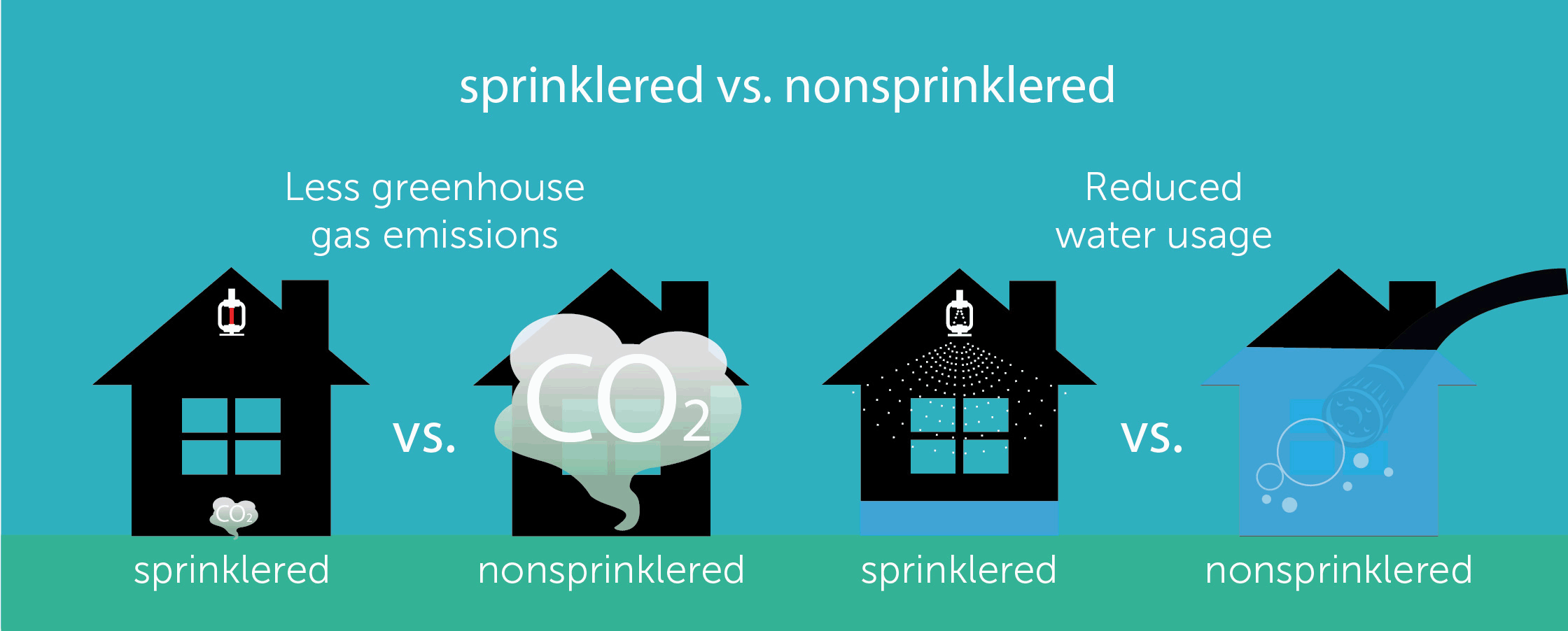Home fire sprinklers can protect your home and the environment. Sprinklers can use as much as 91 percent less water to control a fire compared to firefighting hoses, and result in nearly 98 percent fewer greenhouse gasses.
In 2010, FM Global partnered with the Home Fire Sprinkler Coalition for full-scale fire tests to compare the difference between the impact of a home fire with and without home fire sprinklers installed.
Several benefits were immediately noticeable over traditional firefighting methods, primarily the decrease in water used to put out the fire, and a substantial decrease in greenhouse gas emissions.
The amount of water used to put out the fire using sprinklers was reduced between 50 and 91 percent. According to the National Fire Protection Association, a fire hose sprays no less than 2270 litres of water each minute.
If it takes 10 minutes to put out a fire, the sprinklers could use as little as 2043 litres of water, compared to a fire department using 22,700 litres.
Greenhouse gas emissions – primarily carbon dioxide, methane, and nitrous oxide – in house fires are mainly caused by the burning, manufacturing, transport, and disposal of building materials. When ignited, synthetic materials emit more toxic gasses than natural materials such as wood and cotton. Firefighting activities also contribute to greenhouse gas emissions.
When using home fire sprinklers, the amount of greenhouse gasses dropped by an astonishing 97.8 percent.
In 2021, FM Global released updated information after tracking data for nine years.
The company estimates that in the time between reports, 816,564,163 kilograms of greenhouse gasses were emitted due to a lack of home fire sprinklers in the United States. If each of those home fires had been put out by a sprinkler, the amount of greenhouse gasses would have plummeted to 24,496,925 kilograms.
The report recommends future builds include some key things to ensure safety not only for the residents, but for the planet.
Sustainable materials. Finding new ways to build using natural materials that release fewer greenhouse gasses when burned.
Less water. Home fire sprinklers use less water than a hose, and cause less damage to the home when the fire is being put out.
Public awareness. The study says in its own forward there is a need to build awareness of the need for protection of installed fire sprinklers. The more people know, the better.
To read the full report click here:
https://homefiresprinkler.org/wp-content/uploads/2021/05/Environmental-Impact-of-Residential-Fires.pdf

